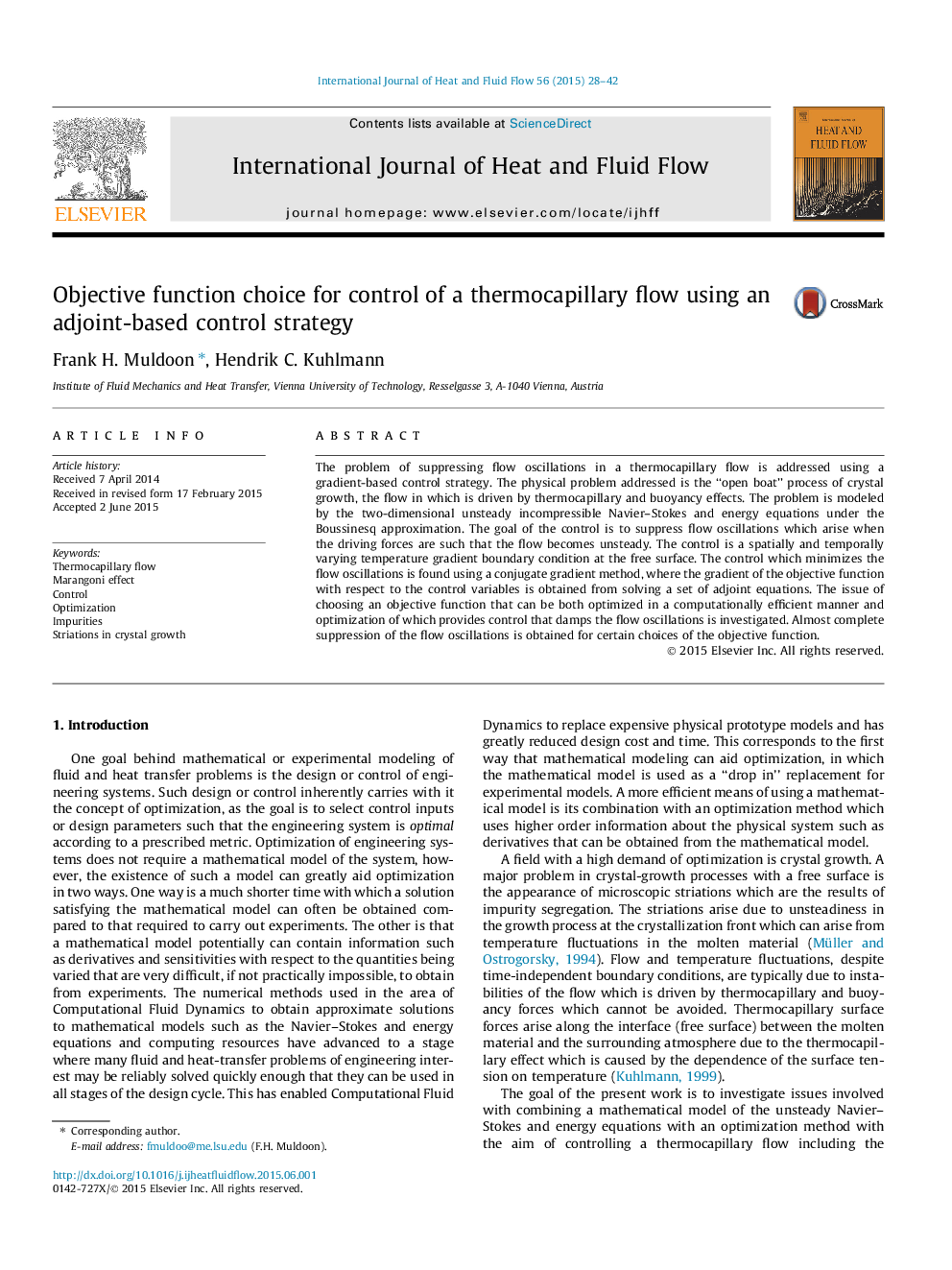| Article ID | Journal | Published Year | Pages | File Type |
|---|---|---|---|---|
| 654981 | International Journal of Heat and Fluid Flow | 2015 | 15 Pages |
Abstract
The problem of suppressing flow oscillations in a thermocapillary flow is addressed using a gradient-based control strategy. The physical problem addressed is the “open boat” process of crystal growth, the flow in which is driven by thermocapillary and buoyancy effects. The problem is modeled by the two-dimensional unsteady incompressible Navier-Stokes and energy equations under the Boussinesq approximation. The goal of the control is to suppress flow oscillations which arise when the driving forces are such that the flow becomes unsteady. The control is a spatially and temporally varying temperature gradient boundary condition at the free surface. The control which minimizes the flow oscillations is found using a conjugate gradient method, where the gradient of the objective function with respect to the control variables is obtained from solving a set of adjoint equations. The issue of choosing an objective function that can be both optimized in a computationally efficient manner and optimization of which provides control that damps the flow oscillations is investigated. Almost complete suppression of the flow oscillations is obtained for certain choices of the objective function.
Related Topics
Physical Sciences and Engineering
Chemical Engineering
Fluid Flow and Transfer Processes
Authors
Frank H. Muldoon, Hendrik C. Kuhlmann,
